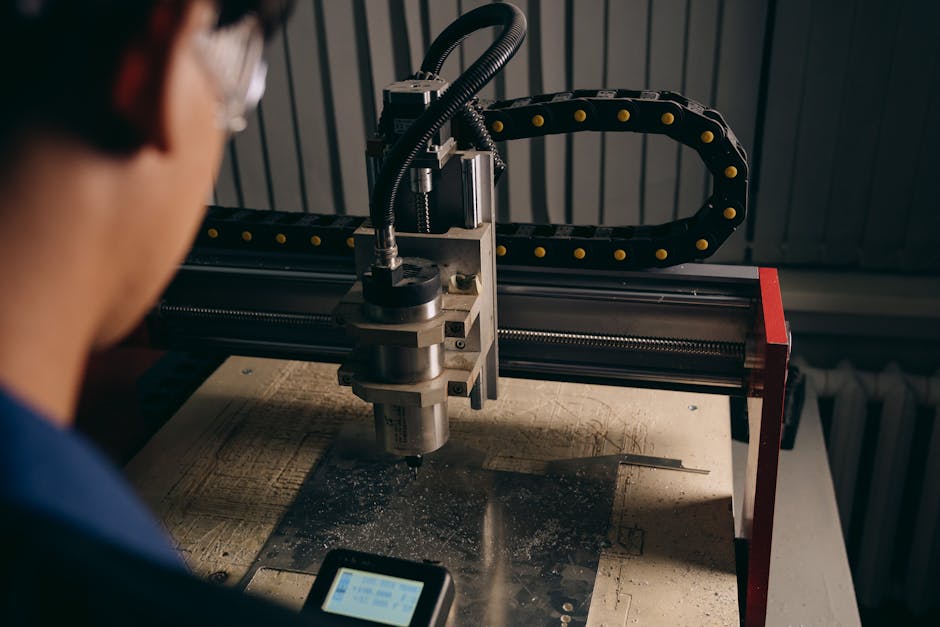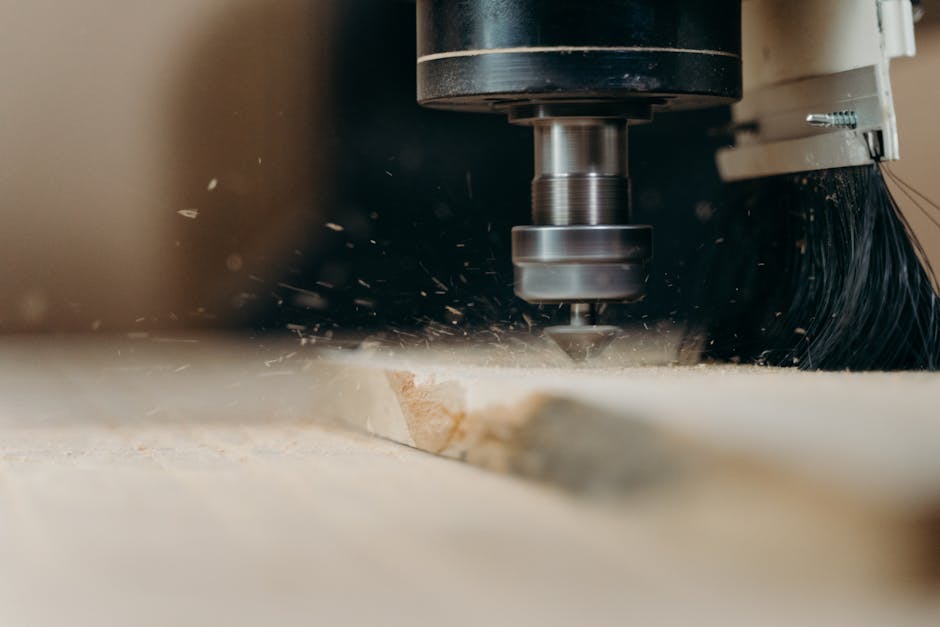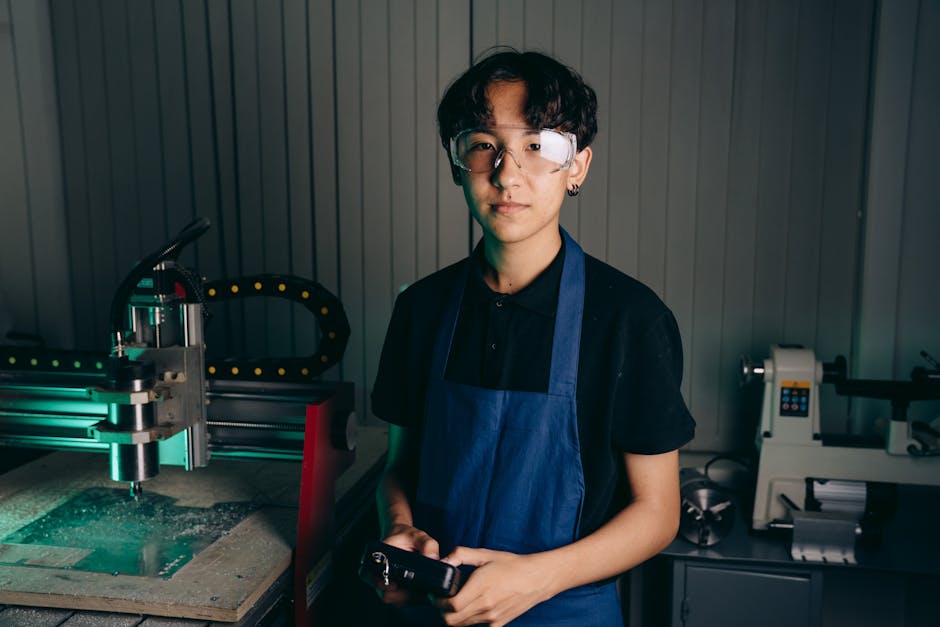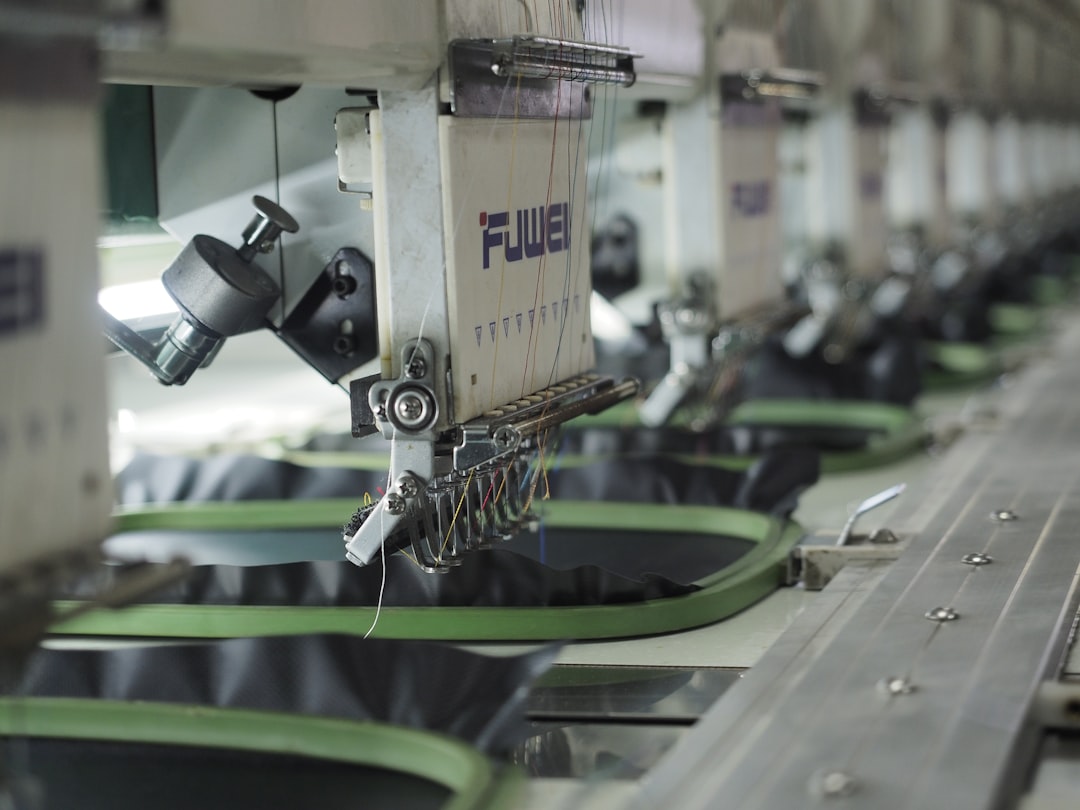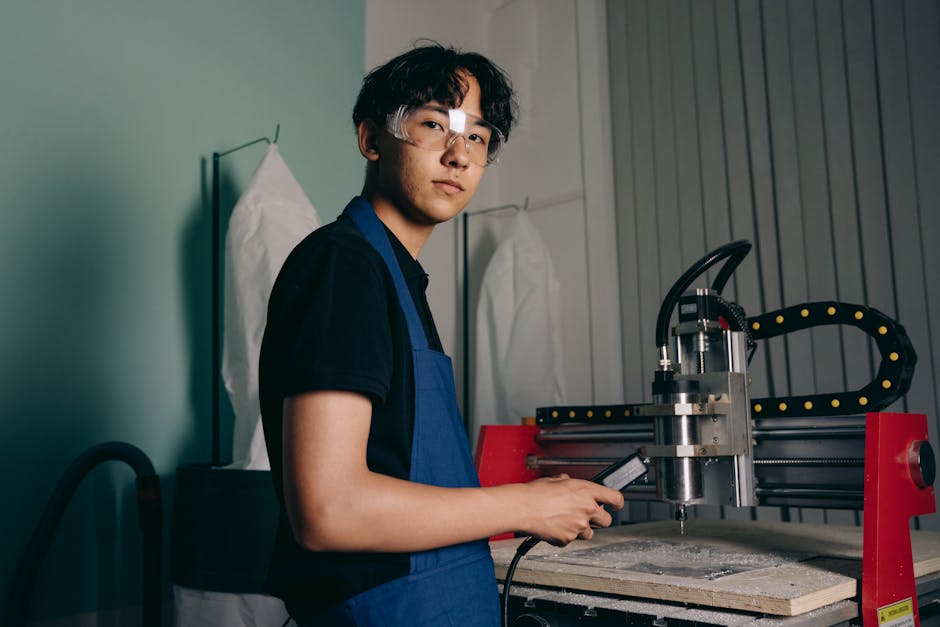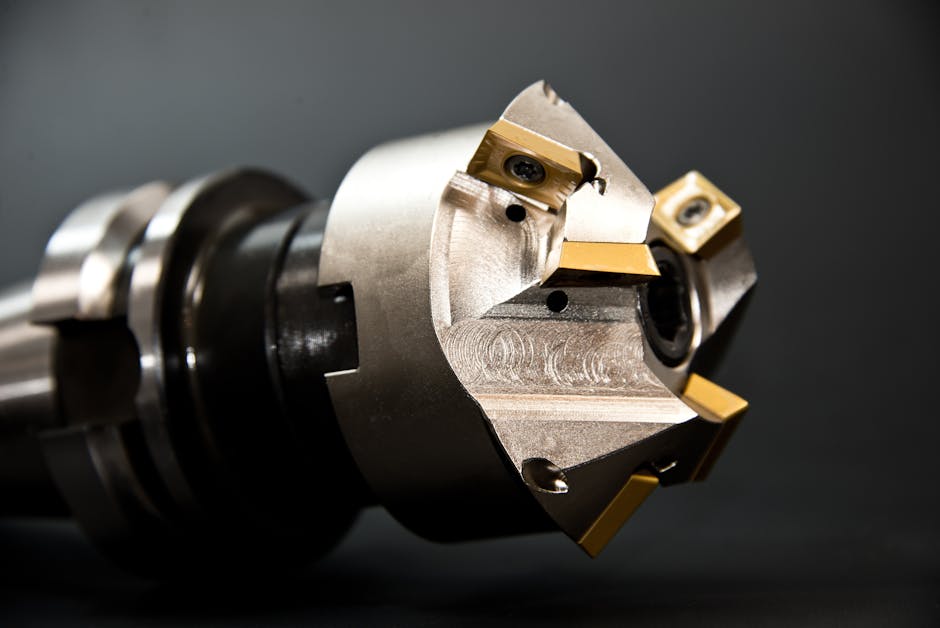
In the world of aviation, aerospace components manufacturers play a pivotal role in ensuring that the skies remain safe and vehicles are exceptionally reliable. These manufacturers are at the heart of producing the crucial precision components needed for aircraft, spacecraft, and defense systems. The global market for these components is vast and changing, with innovations that continuously push the boundaries of what’s possible in aerospace technology.
- Key Players: Top companies like Boeing, Safran, and GE Aerospace lead the charge with cutting-edge technologies.
- Precision and Quality: Precision machined parts are non-negotiable, ensuring the highest standards of safety and performance.
- Innovation Drivers: As the industry moves towards sustainability and efficiency, advanced manufacturing techniques like CNC precision machining are crucial.
The aerospace industry isn’t just about flying from point A to B. It’s about innovation, precision, and a robust global market that’s gearing up for future growth. With increasing demand for both passenger aviation and defense capabilities, these precision components have never been more critical.

Understanding Aerospace Component Manufacturing
Aerospace component manufacturing is the backbone of the aviation sector. It involves creating the critical components that ensure aircraft and spacecraft operate safely and efficiently.
What Are Aerospace Parts?
Aerospace parts are specialized components used in the construction of aircraft, spacecraft, and defense systems. They range from airframes and engines to electrical systems and fasteners. Each part is vital to the overall function and safety of the aircraft.
- Airframes: The structural framework of an aircraft, including the fuselage, wings, and undercarriage.
- Engines: Provide the necessary thrust for flight.
- Electrical Systems: Power the aircraft’s instruments and controls.
These components must withstand extreme conditions, such as high temperatures and pressures, while maintaining reliability and performance.
The Aviation Sector’s Reliance on Precision
In the aviation sector, precision is non-negotiable. Manufacturers use CNC precision machining to create precision machined parts that meet stringent safety and performance standards. This technology allows for the production of complex parts with high accuracy, which is essential for the demanding requirements of aerospace applications.
- CNC Precision Machining: Uses computer-controlled tools to produce parts with exact specifications.
- Quality Assurance: Ensures each component meets rigorous industry standards.
Industry Leaders and Their Contributions
Leading companies like Safran, Lockheed Martin, and Boeing are at the forefront of aerospace component manufacturing. They leverage advanced technologies to produce innovative solutions for both commercial and defense applications.

These companies are not just manufacturers; they are innovators driving the future of aerospace technology. Their commitment to quality and precision helps keep the aviation sector safe and efficient.
In summary, aerospace component manufacturing is a critical aspect of the aviation sector. It involves the production of essential parts using advanced technologies to ensure the highest levels of safety and performance. As the industry evolves, the demand for precision and innovation continues to grow, making these components more important than ever.
Top Aerospace Components Manufacturers
The aerospace industry is driven by innovation and precision. Leading aerospace components manufacturers are at the forefront, crafting the essential parts that keep aircraft and spacecraft in the sky. Let’s dig into some of these industry giants.
Safran
With a global footprint, Safran is a powerhouse in aerospace and defense technologies. Headquartered in Paris, this company is known for its advanced aircraft engines and electrical systems. Safran is also a leader in sustainability, focusing on eco-friendly solutions for the future of aviation.
GKN Aerospace
GKN Aerospace, located in the United Kingdom, is a technology leader in smart engine systems. They serve top aircraft manufacturers with components that shape the future of flight. Their commitment to innovation has positioned them as a critical player in the aerospace market.
Figeac Aero
Figeac Aero, based in France, excels in the change of metals and precision machining. They provide a range of services, including structural parts and subassemblies, playing a crucial role in the aerospace supply chain.
GE Aerospace
GE Aerospace, headquartered in Cincinnati, Ohio, is a leader in jet and turboprop engines. They offer integrated systems for commercial and military aircraft, leveraging their expertise in advanced manufacturing techniques.
Barnes Aerospace
Barnes Aerospace is a prominent manufacturer of aerospace components, specializing in parts for turbine engines. With a focus on innovation and precision, they serve both commercial and military sectors, contributing significantly to the aerospace industry.
These companies are not just manufacturers; they are innovators, driving the future of aerospace technology. Their commitment to quality and precision ensures that the aviation sector remains safe and efficient.
CNC Precision Machining in Aerospace
In the aerospace industry, precision is everything. This is where CNC precision machining steps in, changing raw materials into the intricate parts essential for flight.
CNC Technology—short for Computer Numerical Control—has revolutionized how aerospace components are made. These machines follow pre-programmed instructions to shape materials with extreme accuracy. The result? Parts with tolerances as fine as 0.002 mm, which are crucial in an industry where even the smallest error can have significant consequences.
The Role of Precision Machined Parts
Precision machined parts are the backbone of modern aircraft and spacecraft. They ensure safety, efficiency, and reliability. From bushings and hinges to complex engine components, these parts must meet strict standards.
Precision machining allows for the creation of components with complex geometries and intricate designs that traditional methods simply can’t achieve. This capability is essential for meeting the changing demands of aerospace technology.
Advanced Manufacturing Techniques
The aerospace sector is at the forefront of adopting advanced manufacturing techniques. By using CNC technology, manufacturers can produce parts faster and with less waste. This efficiency not only reduces costs but also improves product quality.
Moreover, the integration of CAD (Computer-Aided Design) and CAM (Computer-Aided Manufacturing) software has streamlined the production process. CAD helps in designing the components, while CAM converts these designs into the G-code used by CNC machines. This seamless transition from design to production ensures that every part is made to exact specifications.
The Impact on the Aerospace Industry
The impact of CNC precision machining on the aerospace industry is profound. It has made it possible to produce components that were once thought impossible. This advancement has led to significant improvements in aircraft design and performance.

As aerospace technology continues to advance, the importance of CNC machining will only grow. It allows manufacturers to keep pace with the industry’s high safety and quality standards, ensuring that every flight is as safe and efficient as possible.
In the next section, we’ll explore the vital role of OEM suppliers in the aerospace industry, highlighting how they collaborate with manufacturers to deliver top-tier components.
The Role of OEM Suppliers in Aerospace
When it comes to building aircraft, OEM suppliers (Original Equipment Manufacturers) are the key players. They provide the main components and systems that manufacturers need to assemble planes. Let’s explore how some of the biggest names in aerospace fit into this picture.
Lockheed Martin
Lockheed Martin is a giant in the aerospace and defense industry. Known for its advanced technology, the company supplies critical components for both military and commercial aircraft. Their expertise ranges from designing stealth fighters to developing space exploration systems. Lockheed Martin’s role as an OEM supplier is pivotal, as they provide cutting-edge technology that shapes the future of aviation.
Raytheon
Raytheon specializes in defense systems and is a leading supplier of avionics—electronic systems used in aircraft. Their components help ensure the safety and efficiency of flights. Raytheon’s precision in manufacturing ensures that their products meet the stringent requirements of the aerospace sector. This focus on quality makes them a trusted partner for many aircraft manufacturers.
BAE Systems
BAE Systems is another major player, particularly in the defense segment. They provide a wide range of products, including radar systems and electronic warfare equipment. As an OEM supplier, BAE Systems collaborates closely with manufacturers to integrate these components seamlessly into aircraft, enhancing their capabilities and performance.
Northrop Grumman
Northrop Grumman is renowned for its expertise in unmanned systems and cybersecurity. They supply advanced technologies that are crucial for modern aircraft, such as surveillance systems and communication networks. Their role as an OEM supplier is essential, providing the technology that keeps aircraft connected and secure.
Boeing
Boeing is not just a manufacturer; it’s also a key OEM supplier. While they build aircraft, they also produce components like wings and fuselages for other companies. Boeing’s experience in aerospace makes them a leader in both manufacturing and supplying critical parts to the industry.
General Dynamics
General Dynamics focuses on aerospace and defense systems. They supply components that range from advanced avionics to sophisticated weaponry. As an OEM supplier, they ensure that their products integrate smoothly with other systems, maintaining the high standards required in aerospace.
Airbus
Airbus, a major competitor to Boeing, is also a significant OEM supplier. They provide components for both commercial and military aircraft. Airbus’s commitment to innovation and sustainability is evident in their products, which are designed to reduce environmental impact while enhancing performance.
In the aerospace industry, the collaboration between OEM suppliers and manufacturers is crucial. These suppliers provide the essential parts and systems that make flight possible. As we continue to push the boundaries of technology, their role will only become more important.
Next, we’ll dive into some frequently asked questions about aerospace components manufacturers, shedding light on the complexities of this vital industry.
Frequently Asked Questions about Aerospace Components Manufacturers
What is aerospace component manufacturing?
Aerospace component manufacturing involves creating the critical parts and systems that make aircraft and spacecraft functional. These components are essential for the aviation sector, ensuring that everything from commercial jets to satellites operates safely and efficiently. The process includes designing, testing, and producing parts like engines, landing gear, and avionics systems.
Who are the largest aerospace manufacturers?
Several companies dominate the aerospace industry, known for their large-scale production and advanced technology. Here’s a look at some of the biggest names:
-
United Technologies: This company is a key player, especially through its aerospace subsidiaries like Pratt & Whitney, which produces aircraft engines.
-
GE Aviation: A leader in jet engine manufacturing, GE Aviation is known for its innovative designs and commitment to sustainability.
-
Safran: Based in France, Safran specializes in aircraft engines and aerospace systems, contributing significantly to both civil and military aviation.
-
Rolls-Royce Holdings: Famous for its high-performance engines, Rolls-Royce is a major supplier to airlines around the world.
-
Honeywell Aerospace: This company provides a wide range of products, including engines, avionics, and integrated systems for both commercial and defense sectors.
Which companies make airplane parts?
Many companies contribute to the production of airplane parts, each specializing in different components:
-
Safran: Known for its aircraft engines, Safran also manufactures landing systems and electrical systems.
-
Lockheed Martin: While primarily focused on defense, Lockheed Martin also produces components for commercial aircraft.
-
Boeing: Besides building airplanes, Boeing manufactures critical parts like wings and fuselages, supplying them to other manufacturers.
-
GKN Aerospace: This company is a leader in aerospace technology, providing smart engine systems and airframe components.
-
SpaceX: While famous for its rockets, SpaceX also develops components for space-bound vehicles and satellites.
-
GE Aerospace: As a division of General Electric, GE Aerospace supplies engines and integrated systems for various types of aircraft.
These companies are at the forefront of aerospace manufacturing, driving innovation and maintaining high standards for safety and performance. They play a crucial role in the industry, ensuring that aircraft are equipped with the best possible components.
Next, we’ll explore how CNC precision machining has revolutionized the production of these components, enhancing accuracy and efficiency in the manufacturing process.
Conclusion
As we wrap up our exploration of the aerospace components manufacturers landscape, it’s clear that precision and quality are paramount in this industry. At TMC Technologies, we pride ourselves on delivering top-tier CNC lathe parts that meet the high demands of aerospace applications. Our commitment to quality and innovation sets us apart in the competitive field of CNC precision machining.
High-Quality Components
In aerospace, every component must perform flawlessly. TMC Technologies ensures this by using advanced CNC technology to produce high-quality parts. Our expertise in CNC machining allows us to create components with the precision required for critical aerospace applications. From electrical connectors to valve components, our parts are designed to meet stringent industry standards.
Custom Applications
Every aerospace project comes with its unique challenges. That’s why we specialize in custom applications, tailoring our solutions to meet specific client needs. Whether it’s developing custom tools or offering comprehensive fabrication services, we work closely with our clients to deliver components that not only meet but exceed expectations.
Our dedication to innovation and precision makes us a trusted partner in the aerospace sector. Explore our aerospace machine shops page to learn more about how TMC Technologies can support your projects with high-quality CNC lathe parts and custom machining solutions.
In conclusion, as the aerospace industry continues to evolve, TMC Technologies remains at the forefront, providing the precision and quality that are essential for success in this demanding field.
